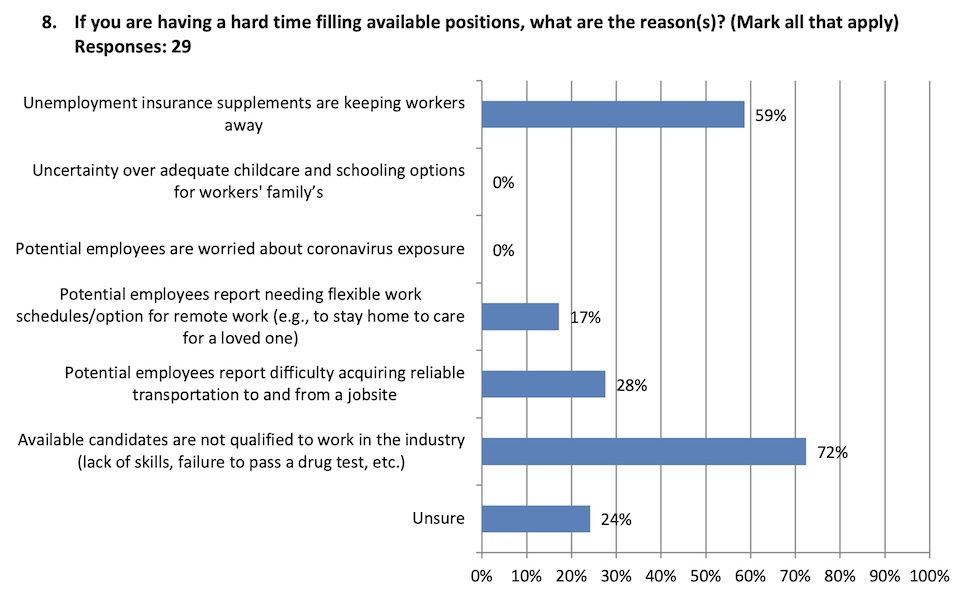16 out of 32 responding South Dakota construction firms added workers over the last twelve months, according to a 2021 Workforce Survey from the Associated General Contractors of America. Nine of those respondents stayed at the same staffing levels, while seven let workers go. About three-quarters of construction firms surveyed expect to add more workers in the next twelve months.
The majority of firms have open positions and say they are having a hard time filling them:

The construction bosses who say they are having trouble finding workers primarily blame a lack of skills in the labor pool and generous unemployment benefits:

Most of our builders do appear to understand the proper capitalist response to a workforce shortage: 88% say they have increased their base pay rates. 36% have offered incentives or bonuses, and 33% have boosted benefits.
I WAS going to elaborate on the many tools, attachments, and skills I’ve used in construction, but it would be pointless. I quit working construction three years ago when bosses thought it was funny when male coworkers removed my ladders, accidentally knocked me over with framing lumber, and told me to go home and have babies.
I shall never work for PIGS again. I am still skilled, I can pass any drug test, I have all of my Porter Cable tools, I can still lift 85 pounds, and I know how to learn.
I won’t work for PIGS again.
good for you, Bonnie
I’m not surprised, though saddened to learn of Bonnie’s experience. My niece is an electrician. I’ve no skills when contrast to hers.
Wages for low skilled workers (a poor label used by banksters) out rises wages of higher skilled workers.
John Authers is a Bloomberg columnist.
“I spend a lot of my professional life drawing charts. You had probably noticed this. Often, producing a chart that tells a story clearly and without distortion takes a lot of work. And sometimes, the first numbers I key into the terminal lead to something truly fascinating that needs no further explanation. This is one of those charts.
The latest revision of the Atlanta Federal Reserve’s Wage Tracker, for August, is now out. It’s enthralling research that has been running since 1997, and breaks down earnings growth by gender, age, skill, level of education and so on. This is how wages have risen since 1997 for the high-skilled, compared to the low-skilled:
For the third month in a row, wages for the low-skilled have risen faster than for the high-skilled. In the previous history of the survey, which now goes back almost 25 years, this had only ever happened in two months, in early 2010. Wage growth for the low-skilled is also exceeding that for the high-skilled by the most on record.
In terms of the momentous macroeconomic issues of the moment, this is good for growth, as poorer people are more likely to spend their pay rises than richer people. It’s also potentially bad for inflation. Wage growth for the lowest skilled is the fastest since August 2008 (not coincidentally, the month before the Lehman bankruptcy), and that could easily lead to higher prices.
More interestingly still, it does suggest a shift in the balance of power between labor and capital. This isn’t as yet a deep-seated or well-established trend, of course. But if it continues it could rattle a lot of assumptions, and alleviate a lot of social tension.”
The graph will not post here so find it at: https://www.bloomberg.com/opinion/articles/2021-09-10/wage-growth-trend-points-to-inflation-political-joy-for-biden?srnd=opinion